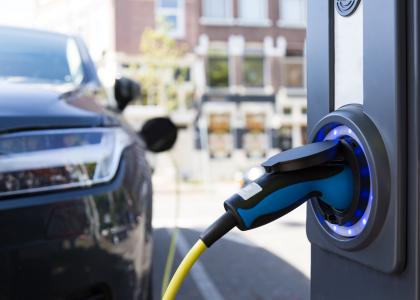The 2015 City Scorecard ranks 51 large US cities across five policy areas on their policies and efforts to save energy. Its focus on policies and other initiatives is meant to identify and highlight important actions cities can take to become more efficient. In the process, it offers the beginnings of an efficiency roadmap for any city that wants to save more energy.
The City Scorecard’s metrics can also be used to evaluate other communities beyond the large ones included in the report. All communities, large and small, have the potential to lead on energy efficiency. With the updated 2015 Local Energy Efficiency Self-Scoring Tool released today, communities can evaluate their progress on energy efficiency efforts to get a better understanding of where they stand in relation to peers.
Comparing against peers
Because the largest cities have already been scored in the City Scorecard, we imagine small and medium-sized communities will be the primary users of the tool. To enable these communities to compare their efforts against localities of similar size, we scored eight “peer communities” and embedded their scores in the tool. The peer communities are Arlington County, Virginia; Boulder, Colorado; Burlington, Vermont; Charlottesville, Virginia; Knoxville, Tennessee; Madison, Wisconsin; Park City, Utah; and Lawrence, Kansas. Each community’s score and policy information is available in the ACEEE State and Local Policy Database.
Scoring your community
If you want to know how your community ranks, you can find out by answering multiple-choice questions associated with the metrics in the City Scorecard. If you do score your community, we encourage you to return the results to us by sending the completed Self-Scoring Tool to cityscorecard@aceee.org.
We will verify the data (time and resources permitting), and may even include policy information and scores for your community in the State and Local Policy Database. The database details energy efficiency program and policy information for over 60 jurisdictions and provides you with an opportunity to showcase your community’s efforts.
A conversation with an Arlington, Virginia program analyst
To get a perspective on how communities can be successful, we spoke with someone from Arlington County, which received the top score among the eight communities included in the tool. Below is a Q&A with energy program analyst Jeannine Altavilla (listed as JA below) of the Arlington Initiative to Rethink Energy (AIRE).
ACEEE: Jeannine, what have been the most effective energy efficiency programs Arlington County has implemented to save energy?
JA: Arlington’s most successful energy efficiency program has been the Green Games, in which over 15 million square feet of commercial office property competed for energy and water savings across one year (against a prior year baseline). The county offered more than 40 training and networking events. Arlington estimates the businesses generated over $2 million in utility savings, with the average ENERGY STAR® Portfolio Manager rating of the 55 participating properties increasing from 73 to 76 over the one-year program.
ACEEE: You must have encountered obstacles while implementing the Green Games or other programs. Based on your successes and general experience with overcoming hurdles, what advice do you have for other localities working to improve energy efficiency?
JA: Establish and maintain relationships. The Green Games was successful in large part because it was a ”high touch” program. Talk about your successes and gain allies in all parts of your organization and beyond. So much of energy efficiency is behind the scenes and quickly forgotten. Make participation interesting and fun, and find ways to talk about savings when a project is newly completed.
ACEEE: Where do you see the greatest (untapped) potential for energy efficiency in Arlington County and how are you working to tap that potential?
JA: Energy-efficient lighting is still grossly under-used in Arlington (and across Virginia). The emergence of linear LED tubes as replacements for common fluorescent lighting in commercial buildings will yield a dramatic reduction in electricity demand. Arlington offered a lighting rebate program during a hiatus in the utility lighting rebate program. Also, our LED Light Bulb Swap campaign distributed 1,626 efficient LED light bulbs and exchanged them for old inefficient light bulbs at events throughout the county. We will continue to promote (and incentivize, as we are capable) modernization of lighting.



